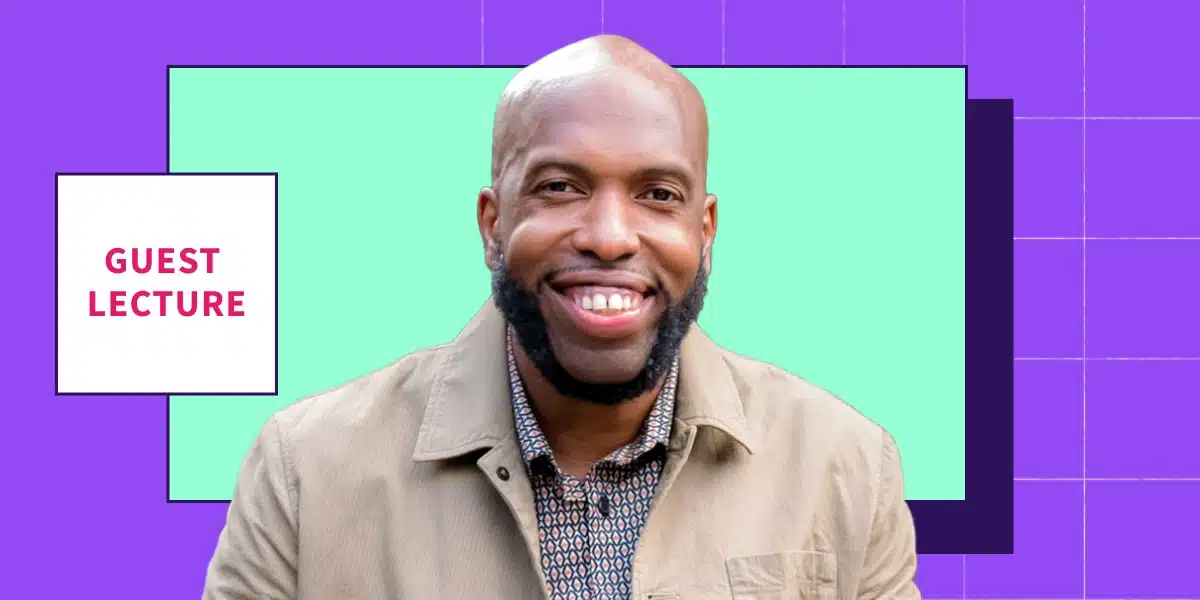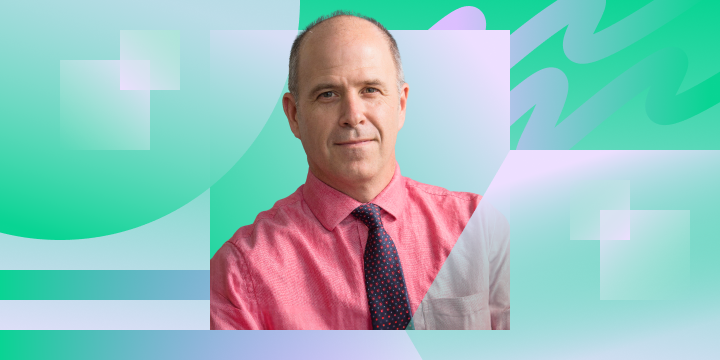Equity. It may now be a buzzword, but when it comes to supporting your student body, it can’t be an afterthought. It’s something that must be woven into the fabric of your course from day one. Bryan Dewsbury, Associate Professor of Biology at Florida International University, is here to guide you.
After completing grad school and paying close attention to the flaws of the postsecondary system, Dewsbury was determined to make his own classroom a place where diverse students could thrive and excel. We share his story below and his advice for educators looking to bring an extra dose of inclusion and accessibility to their courses.
→ Get Dr. Chris Emdin’s tips on authentic teaching [Free Virtual Event]
You’ve spoken widely about the ‘social context of education.’ What does this mean and how does it predict engagement and retention for marginalized students?
When a student arrives at your course, they don’t walk in as a blank slate. The experiences and social struggles that they’ve had prior can’t be wiped away. The social context of education refers to the realization that several socio- cultural and economic factors will inevitably impact the degree to which students can engage in a given moment. As educators then, our role is to understand that not everyone will be fully cognitively and emotionally present in the classroom—which is more than okay. It’s why equity is the backbone of my courses today.
How have you re-thought traditional teaching structures to allow for more flexibility and accessibility in your course?
The current structure of my course pre-dates the pandemic by about six years. I’ll share how I’ve adjusted my attendance and assessment approach to give students the most autonomy possible.
Attendance: Anything that has a point-value associated with it doesn’t accurately reflect true learning or a skill that we want students to develop. Belonging can also serve as a big predictor of attendance. If you’re not motivated to be in a space or see value in being present, you’re more likely to skip attending lectures. The challenge that I set for myself? Design the type of face-to-face experience where students wake up in the morning and can’t wait to come to class.
Assessment: My assessment structure has always been quite diffuse. The first major exam is worth 15 percent of the final grade and out of 50 points. Hypothetically, students could get a 0 on this assessment yet still pass the class. For me, the point of assessment is to build in enough space to help students transition into a post-secondary understanding of your discipline and to get comfortable in a technical environment. It’s not about using it as a tool to see who’s the brightest student in your course.
What are some ways that professors can get to know their students better on a personal level?
The biggest piece of advice I can give: getting to know your students must be done from an equity-based lens. You’re trying to learn from a place of humility and not confirm a bias you may already have. That involves putting structures in place to make sure students are accommodated without having to ‘out themselves’ to you and their peers. For example, in a room of hundreds of students, it’s unlikely that learners who are food insecure will volunteer that kind of information up front.
I’ve begun to shift my role from subject matter expert to someone who purposely cultivates excellence among, and with, students. One of my favorite quotes is, “I don’t teach biology. I teach students, I cover biology.” There’s a couple simple practices I use to fully embrace this mindset.
- Using a basic needs security statement: Sara Goldrick-Rab at The Hope Center for College, Community, and Justice has developed a great syllabus insert to remind students where to access your campus’ food pantry, stable housing, mental health, financial aid resources and more.
- Buying meals once a week: Since my student success hours (what I call office hours) fall during the dinner window, I’ll buy pizza for everyone who shows up. For commuter students or those who are food insecure, it’s a way that I personally show up for them.
How can faculty reduce barriers in the classroom in order to level the playing field?
It’s hard to narrow it down, but feedback quality and exam structure are two things that come to mind.
Feedback: Many students who are taking their first Biology course may struggle to adjust—not because they’re not capable of learning and engaging with Biology principles, but because of the psychology associated with transitioning from high school to post-secondary. Some of the worst feedback you can give students is just a letter or word. Consider inviting students to provide feedback. By asking students about their study techniques and frequency, you’ll a) be in a better position to help learners navigate through assessments and b) help them develop a lifelong skill that will exceed their time within your course.
Exam structure: The last question I always ask on my exams is, “predict your score out of 50.” The responses to this question allow me to host larger conversations with students about why there might be a 15-point gap between their predicted versus actual grade. I’m able to use this information to ask how they prepared and get a sense of other circumstances—not necessarily related to academics—that could have impacted their ability to get their predicted grade.
Let’s say a professor wants to incorporate underrepresented voices into their curriculum. How might they get started?
Incorporating imagery of Black and Brown students in your textbook or showcasing the work of diverse scholars on your syllabus is only the tip of the iceberg. Instead, start by dedicating a good chunk of time to re-engaging the scholarship on inclusive and equitable teaching and doing the learning yourself. Because when that takes place, understanding the top five tactics to put into place on a Monday morning really isn’t that hard. When you get to a point of seeing people and understanding their humanity, teaching automatically revolves around humanism. That, to me, feels like a good place to begin.
→ Free Virtual Event: Dr. Chris Emdin on Supporting Diverse Students
Bryan Dewsbury is an Associate Professor of Biology and Associate Director of the STEM Transformation Institute at Florida International University. He is the Principal Investigator of the Science Education and Society research program where he and his team explore questions pertaining to the social context of teaching and learning. He is a Fellow of the John N. Gardner Institute and the Racially-Inclusive Open Science institute (RIOS). He has conducted faculty development at over 100 institutions of higher education across North America and West Africa pertaining to inclusive practices. He is a co-author of the upcoming book ‘Norton Guide to Inclusive Teaching,’ creator of the upcoming MOOC ‘Education for Freedom,’ and founder of the NSF-funded ‘Deep Teaching Residency.’


